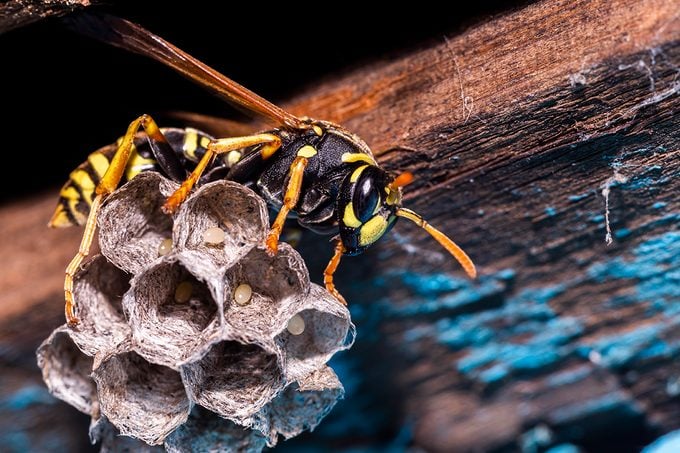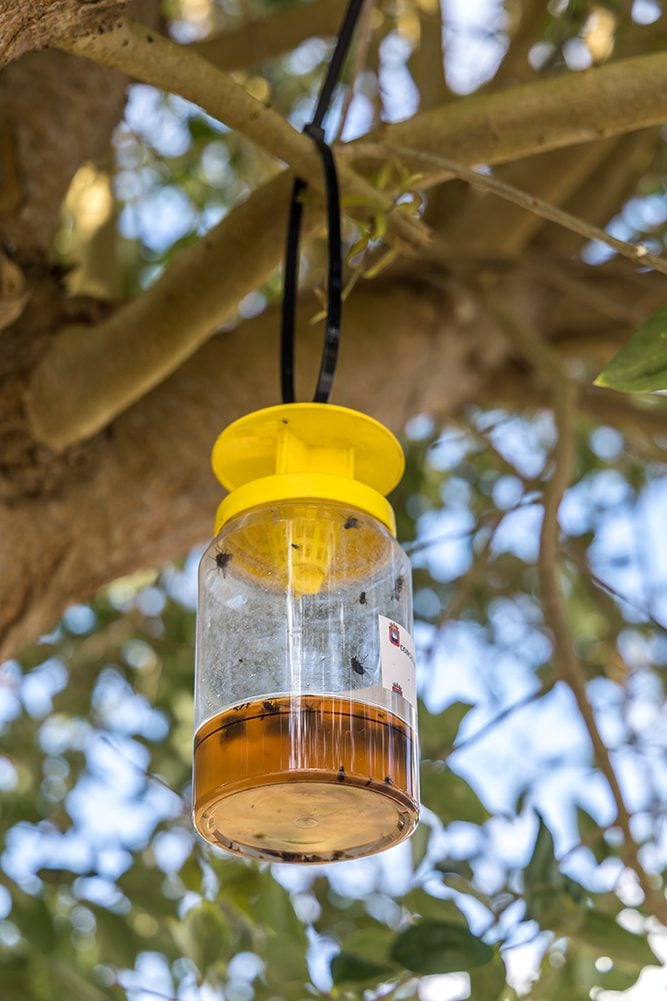Control Summer Wasps by Eliminating the Queen in the Spring
Early spring might not be the time of year you think of these stinging pests, but it should be.
Our editors and experts handpick every product we feature. We may earn a commission from your purchases.
Nobody likes being stung by a wasp. Their presence during the summer causes some of us to run and hide. For others, a sting can be deadly. Read on to find out how to better your chances of avoiding run-ins with these pests.
Emergence of the Queen
In late March and into April, as the ground starts to thaw and the last flakes of the previous winter fade, a familiar pest begins to move about. When temperatures reach around 50 degrees, the queen wasp comes out of hiding and starts looking for places to start her colony.
The queens are hearty enough to survive the harsh winter months, hibernating in safe, protected spaces. The female worker and male drone wasps aren’t so lucky. They die out with the first frost. Each previous year’s colony produces several new queens.
Creating a New Colony
As the weather warms in early spring, the hibernating wasp queens set out to create new colonies. Wasps don’t reuse old nests, opting instead to build new. They will, however, choose the same area or tree branch. When they find a suitable spot, they’ll begin.
First, the female wasp queen chews up wood fiber from trees, logs, plants and even fences, decks and wood patio furniture. From that, she creates a pulp in her mouth to build the nest with.
Paper wasp nests take on a honeycomb structure and resemble upside down umbrellas. Hornets, a type of wasp, build their nests on tree branches, under building eaves, in birdhouses, inside mailboxes or under electrical outlet covers. Hornet nests are papery and grey, resembling a giant football or upside-down bulb, often with multiple holes in the bottom.
Yellow jackets, a different kind of wasp, most often build their nests underground in burrows or holes. They’re known to excavate dirt, moving it outside the hole as their nest size increases.
In the spring, the queen begins laying eggs that hatch into the workers and drones of the new colony. Those workers and drones assist in growing the nest and the colony.
According to Plunkett’s Pest Control, it takes about three weeks for the eggs to hatch and a new colony to begin. As their numbers multiply, so does the potential for your summer barbeque to be the focus of their attention.
Wasps are territorial and will defend their nests if they feel threatened. Some wasp species secrete a specific pheromone that prompts other wasps in the colony to attack and sting the perpetrator. Wasp stings can be painful and even deadly for some, creating a potential anaphylactic reaction.
Catch the Queen
The solution is to eliminate the queen(s) before she/they can build a stinging dynasty. There are innumerable options to catch wasp queens in the spring. Fortunately, they’re the same methods that work well for catching worker wasps later in the season.
Store-bought wasp traps lure the insects in where they can’t escape, eventually dying of dehydration or starvation. Myriad methods entice the insect inside the trap. Some use pet food, specifically wet cat food; the high protein is said to attract the insects. Other options include fruit chunks or fruit juice, raw meat or fish, jam, soda or even wine.
Use protein-rich baits in the spring and fall and sweet ones during the summer months. Many of these traps include specially formulated attractants to lure the pests inside. Whatever bait you chose, make sure to change it out regularly and clean the traps. Wasps aren’t attracted to moldy and rotting food. For the most effectiveness, scatter several traps around your yard.
DIY Solution
The main idea behind most traps is creating an enclosure the wasp can’t escape from. A simple solution is to cut a soda bottle in half and invert the top inside the bottom. The small hole in the spout prevents the wasp from escaping. Fill the bottom with your choice of bait and place in an area with wasp activity.





